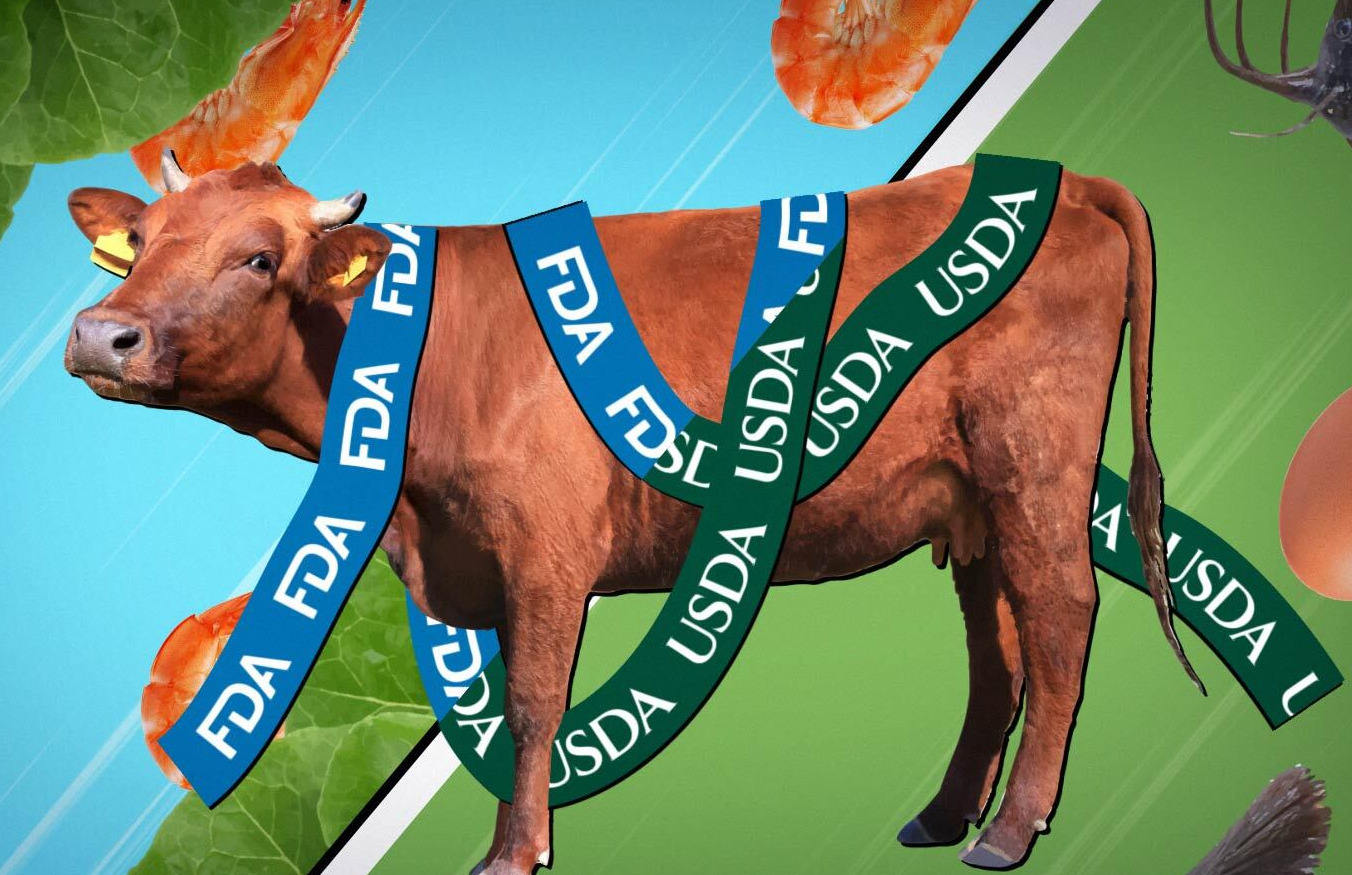
Dr. Sanjay Gupta: Explains the Science of Mouth-Taping
There’s a new sleep trend making waves: taping your mouth shut at night. Advocates say it can help you breathe better, sleep deeper, and even…
Thought Leader: Sanjay Gupta

WASHINGTON — On a bright June day in 2018, one of the nation’s top regulators waved groceries in the air, quizzing the secretary of agriculture on which agency is charged with monitoring different types of food.
Scott Gottlieb, the commissioner of the Food and Drug Administration at the time, grinned widely as he held liquid egg whites and a carton of eggs. The former is under the U.S. Department of Agriculture’s food safety purview. The eggs, under the FDA’s. The mood was jovial, winkingly acknowledging the complexity, and at times absurdity, in the way the government regulates food.
But in times of crisis, the splintered U.S. food regulation system is far from amusing. With an outbreak of the H5N1 bird flu spreading among dairy cattle, experts say that the longtime fractured nature of the U.S. food regulation system could hamper the federal response.
STAT interviewed more than 20 former agency officials and independent experts, many of whom described the relationship between the USDA and the FDA as being punctuated by tense turf battles. Some cited the recent history as a basis for their concern now over H5N1. In the past, the fragmented responsibilities between the FDA and sub-agencies within the USDA led to inefficient investigations and stunted surveillance testing in cases involving E. coli, salmonella, and tuberculosis.
Because H5N1 is currently an animal disease, it’s clearly the USDA’s responsibility to test cattle and get a handle on the outbreak. But already, public health experts are concerned that the scope of that agency’s testing regime is too limited. The department is requiring farmers test only lactating cows before moving them across state lines.
“There needs to be a better understanding of the scope and scale of the problem,” said Stephen Ostroff, a former deputy commissioner in charge of food safety at the FDA. “This seems like it’s not necessarily going to be able to identify problems that could occur within a state.”
Some food safety experts believe the USDA has legal authority to conduct broader testing on farms, but so far it’s taken a voluntary approach whereby the agency is offering to pay farmers who choose to test their cows.
“I think [USDA] should be doing more,” Gottlieb told STAT. “I think we should be doing everything possible to isolate these outbreaks and prevent further spread.”
The USDA did not respond to questions from STAT. The agency’s secretary, Tom Vilsack, said on a call with reporters Friday that the USDA doesn’t have authority to require tests of cows being moved within a state, but didn’t directly address whether the agency has authority to test cows on farms.
The FDA, meanwhile, tested pasteurized milk in grocery stores and confirmed the absence of live H5N1 virus. But if the agency wanted to enter farms to test livestock products and better understand how the disease might spread into human foods, it couldn’t. Neither could the Centers for Disease Control and Prevention.
“The FDA continues to work steadfastly toward its goal of reducing foodborne illness, but it is true that access to data and information can present challenges for the agency in its response — as well as prevention — efforts,” an FDA spokesperson told STAT.
It’s a glaring gap in the U.S. food regulatory system: No federal agency has the authority to go on farms to test for human diseases.
“It’s like if you go to put out a fire in an apartment building and the fire is coming from the apartment next door, but you’re not allowed in that apartment,” said Sarah Sorscher, the director of regulatory affairs at the Center for Science in the Public Interest.
Several experts and former federal officials argued that bringing food regulation under one agency would clearly improve public health, but industry interests and political power grabs make it a utopian, unlikely reality.
David Acheson, a food safety expert who has worked at both the FDA and USDA, warned, “With food safety, change doesn’t happen until people die.”
Stuart Pape still has his government-issued green binder from when he worked in the FDA commissioner’s office in the late 1970s. He labeled it “FDA/USDA Turf Battle” to keep track of all the times the agencies clashed.
“Most of the time, FDA and USDA, in terms of food safety, get along just fine,” Pape, now a food regulatory lawyer at the firm Polsinelli, said. “But occasionally, they don’t.”
The missions are markedly different. While the USDA is in charge of regulating the country’s meat, poultry, and egg supplies, it also seeks to promote American agriculture. Abraham Lincoln founded the agency in 1862 to support the farmers supplying Union troops with food. The FDA, on the other hand, was founded in 1906 and is exclusively focused on food and drug safety. It’s part of the Department of Health and Human Services, which is charged with protecting human health.
“USDA has a conflicted mission,” said Thomas Gremillion, the director of food policy at the Consumer Federation of America. “It’s promoting these industries, but at the same time, it’s gonna regulate the safety of their products.”
Jerold Mande, who has served as deputy undersecretary for food safety at the USDA and in the commissioner’s office at the FDA, said farmers see the USDA as less threatening.
“USDA comes on the farm … and they’re seen as friends,” Mande said. “You see USDA as in your corner fighting for you everyday, versus FDA where this is a police officer just showing up on your property. They may be armed and could bring criminal charges against you.”
As evidenced by Pape’s binder held together by 40-year-old Scotch tape, the agencies have bickered for decades. Though the two share the goal of maintaining a safe, thriving food supply, complicated power dynamics can easily impede that purpose.
Tensions have bubbled up in several high-profile instances, including a fight during George H.W. Bush’s administration over food labeling. Don’t even get an FDA regulator started on catfish, a food category that fell to the USDA in 2014 after political pressure from catfish farmers. Southern farmers wanted to squash foreign competition by leveraging the USDA’s tough scrutiny of imported animals, and Thad Cochran, then a U.S. senator, became their champion. Studies by a government watchdog have shown splitting seafood between the agencies causes $14 million in duplicative spending every year.
“An unbelievable waste of money, resources, time,” Acheson said. “FDA fought to keep catfish but failed because it was coming under congressional pressure to move it.” The USDA made a “grab” for all seafood, Acheson said, and it got ugly.
In an interview, Gottlieb said the FDA and the USDA jockeyed for control over cell-cultured meat during his tenure as commissioner — an area the agencies recently decided to jointly oversee. But he noticed the deeper, cultural differences as well. USDA officials think the FDA is insensitive to the commercial concerns of farmers, which Gottlieb said can sometimes be a legitimate gripe. On the flip side, FDA officials feel the USDA doesn’t act quickly enough during outbreaks.
“I felt and I still do feel that some of the agricultural regulators aren’t aggressive enough early enough and risks percolate for too long,” Gottlieb said.
A former USDA official called friction between the two agencies a constant, and described the FDA’s attitude toward the USDA as condescending. The former official also said the FDA weighs input from health advocacy groups more heavily, while the USDA is more likely to balance that input with information from industry.
“These M.D.s and Ph.D.s believe that we are all uneducated rednecks and that we don’t know what we’re doing, and because we listen to different constituencies we can’t get it right,” said the former official, speaking on condition of anonymity to describe the dynamics more candidly.
Some experts said the agencies communicate more frequently and efficiently during urgent situations. But the jurisdictional divide can also get in the way of conducting thorough surveillance during public health emergencies.
A noteworthy example is the 2018 E. coli outbreak in romaine lettuce that sickened more than 200 people and killed five. While FDA investigators quickly rooted out romaine as the source, they struggled to confirm their theory that the disease originated from a livestock feedlot located near an irrigation canal used by lettuce growers. The FDA could test the canal, but did not have the authority to test the cattle.
Ostroff, the FDA food safety lead at the time, said the agency eventually gained access to the facility after long discussions. But months had passed since the initial outbreak, and he said agency personnel tested only a few dozen animals out of more than 100,000.
The FDA had encountered a similar issue a few years earlier, in 2015, when pig farmers blocked investigators from their property during a salmonella outbreak that sickened almost 200 people.
And at the FDA in 2005, Acheson had witnessed the dysfunction while handling a bovine tuberculosis outbreak spreading through cheese. The cheese came from infected cattle, and Acheson’s team believed people were illegally importing the product from Mexico. He asked members of the USDA’s animal protection team if they could set up import controls to prevent infected animals from crossing the border.
But because the tuberculosis was making people sick and not animals, the USDA said its hands were tied.
“That was an absolute roadblock and jurisdictional breakdown,” Acheson said. “Clearly, there was not an adult in the room who could say, look, we’ve got people dying from TB, it’s coming from cheese and sick animals, we need to work collaboratively to figure out how to stop this.”
Dr. Sanjay Gupta: Explains the Science of Mouth-Taping
There’s a new sleep trend making waves: taping your mouth shut at night. Advocates say it can help you breathe better, sleep deeper, and even…
Thought Leader: Sanjay Gupta
Joe Grogan: The Alzheimer’s Economic Threat
Social Security could become insolvent in as little as eight years, with more people retiring and living longer and fewer paying into the program. Alzheimer’s disease is…
Thought Leader: Joseph Grogan
Evan Feigenbaum on the outcomes of Putin’s India visit
Evan Feigenbaum of the Carnegie Endowment for International Peace argues that none of India’s major challenges can be meaningfully addressed by deepening ties with Russia.…
Thought Leader: Evan Feigenbaum

